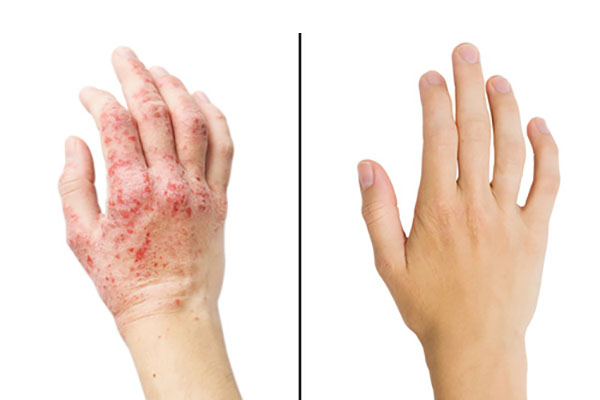
UV Phototherapy Dosimetry
Phototherapy refers to the use of optical radiation (ultraviolet, visible and infrared light) to treat medical conditions. In particular, UV radiation is widely used to treat a range of skin conditions such as psoriasis, parapsoriasis, vitiligo, atopic dermatitis (eczema), and mycosis fungoide.
Types of UV phototherapy
There are three principal types of UV phototherapy:
- Broadband UVB (BB-UVB) in which the skin condition is treated with the full spectrum of UVB radiation, 280-315nm. BB-UVB lamps are typified by the Philips TL12 range;
- Narrowband UVB (NB-UVB) in which just a narrow wavelength range within the UVB spectrum is used for treatment. Typically, lamps emitting 311nm such as Philips TL01 lamps are employed. Excimer lamps and pulsed lasers (308nm) are also used.
- PUVA (Psoralen + UVA) in which broadband UVA radiation (315-400nm) is used in conjunction with a psoralen, (a compound that increases the effect of UVA radiation on the skin). PUVA is also sometimes referred to as photochemotherapy.
UVB is most routinely used to treat common skin conditions. NB-UVB has largely replaced BB-UVB as it eliminates the short wavelengths found in BB-UVB which are more likely to cause erythema and hence carries greater long-term cancer risks. PUVA is often preferred for conditions such as mycosis fungoides, hand and foot eczema, and pustular psoriasis as well as for conditions that have not been responsive to UVB.
Patient oriented UV Phototherapy and Dosimetry
Accurate patient dosimetry is important in UV phototherapy. It not only ensures that patients can be treated consistently irrespective of the clinic attended, but is also necessary to ensure that a patient’s absolute cumulative dose of UV radiation can be accurately recorded so that the long-term skin cancer risks can be best managed.
For clinical phototherapy purposes UV radiation dose is determined by the irradiance measured at the skin surface multiplied by the length of exposure. The irradiance is measured in units of power per unit area, typically in mW/cm2. Therefore, for an exposure time in seconds, the dose is expressed in units of energy per unit area, typically J/cm2. However, large discrepancies in dosimetry between treatment centres have been reported [1]. The main sources of error have been attributed to a number of factors including poor cosine response, poor spectral matching of UVA and UVB bands, as well as inappropriate and non-traceable calibration of the radiometers used. Where CCD-based spectroradiometers are used for UV dosimetry, their poor scattered light rejection is often an additional significant source of error.
Measurement Euqipment for UV Dosimetry
Gigahertz Optik GmbH manufactures cosine corrected radiometric sensors with dual detectors, XD-9503 and XD-9501, designed specifically to measure the UVA and UVB irradiance of phototherapy lamps. The X1 Dosimetry Optometer provides direct display in dose or irradiance units for these detectors.
Consideration should also be given to the protection of clinical staff from UV radiation scattered from walls and ceilings for example. The European Directive 2006/25/EC[2] sets minimum health and safety of workers requirements from the risks related to UV optical radiation. Gigahertz Optik GmbH manufactures detectors and personal dosimeters specifically for this purpose and offers NMI traceable calibrations (see Light hazard applications).